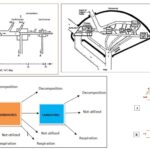How is the Beer-Lambert Law used in spectroscopy?
How is the Beer-Lambert Law used in spectroscopy?
Please login to submit an answer.
In spectroscopy, the Beer-Lambert Law is used extensively to analyze the concentration of substances in a solution based on their absorbance of light. This law allows for quantitative analysis by measuring the absorbance of a sample at a specific wavelength, which is directly related to its concentration. By knowing the molar absorptivity (ε) of the substance and the path length of the sample cell, the Beer-Lambert Law provides a way to determine the concentration of unknown solutions by comparing their absorbance to that of known standards. The law also plays a crucial role in monitoring chemical reactions by tracking the change in absorbance over time, allowing researchers to study reaction kinetics. Additionally, the Beer-Lambert Law is useful in determining the purity of compounds by assessing the characteristics of their absorption spectra and identifying any impurities that might absorb light at the same wavelength.
- Share on Facebook
- Share on Twitter
- Share on LinkedIn
Helpful: 0%




